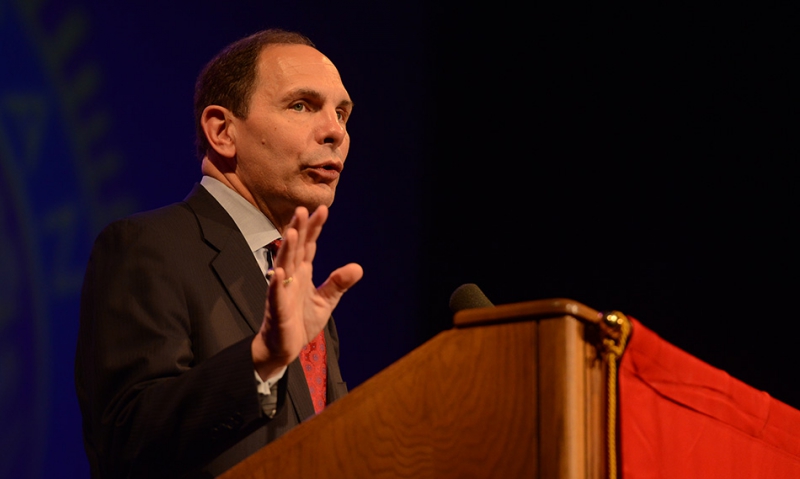
VA’s ‘Road to Victory’ needs ‘concrete accomplishments’
Department of Veterans Affairs Secretary Robert McDonald told reporters at a Sept. 8 press conference in Washington that VA has “made significant progress in recent months, but there is a lot more work to do. Our focus now is turning to what we intend to accomplish over the next 60 days.”
McDonald then announced VA’s new “Road to Veterans Day” plan that is anchored by three strategies: to rebuild the trust of veterans and other stakeholders, improve the delivery of services, and to set a course for long-term excellence. VA will be “looking at the department from the lens of the veteran, and deciding what we need to do to reorganize, to deliver better access, better care for the long term.”
American Legion National Commander Michael D. Helm said, “We applaud the secretary’s initiative, yet we are looking for concrete accomplishments that can be measured against standards on which everyone agrees. Restoring trust, improving delivery and achieving excellence are nice, nebulous phrases that don’t mean much unless there is a measuring stick applied to them.”
Regaining the trust of America’s veterans will require VA to reinforce its core mission and values “and reset VA’s culture to be consistent with them,” McDonald said. “We’ve asked all employees to recommit themselves, reconfirm their commitment to those values.”
Relationships also need to be rebuilt with veterans service organizations (VSOs) and other stakeholders, McDonald said. He mentioned speaking at the national conventions of four VSOs, most recently at The American Legion's 96th Annual National Convention last month in Charlotte, N.C.
Delivery of VA services will be improved, McDonald said, by identifying “work that doesn’t add value to the veteran, and if we have (such) work, we’ll simply stop doing it so we can redeploy resources more toward the veteran.” VA shouldn’t “punish veterans,” McDonald said with an overly complicated system with such things as 14 different websites and nine different maps that describe VA facility locations.
“We’ll judge the success of all of these efforts against one single, unified metric – that metric is obviously the satisfaction of the veterans that we’re trying to serve.”
